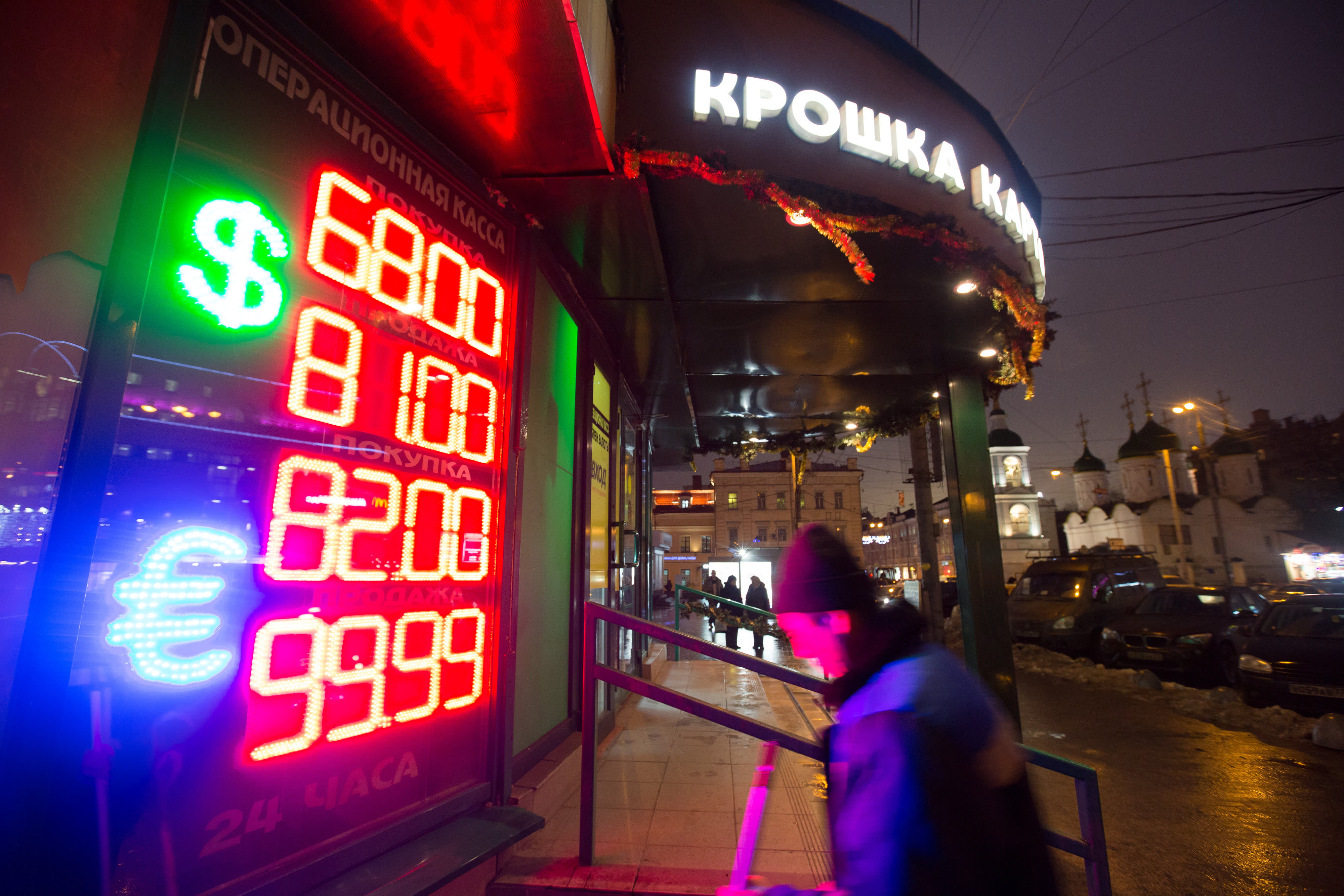
Bloomberg | Getty Images
The ruble has been on a steady incline since mid-April, supported by rising oil prices and a hawkish Central Bank of Russia, but a geopolitical cloud is forming as President Vladimir Putin prepares to meet with U.S. President Joe Biden on Wednesday.
The currency notched its strongest level against the greenback since July 2020 last week, according to Reuters data. The dollar dipped to below 72 against the Russian currency to an intraday low of 71.5, as the price of oil notched a 26-month high and Russian inflation surged in May, raising interest rate expectations further. The greenback was trading at 71.97 against the ruble early on Tuesday morning. Meanwhile Russian bond yields rose last week even as U.S. yields retreated.
However, the threat of Western sanctions has consistently clouded the outlook. Biden and Putin will meet in Switzerland to discuss strategic nuclear stability and the deteriorating ties between the Kremlin and the West.
The Russian leader has said relations with Washington are at their lowest point in years, while the White House has vowed that Biden will raise Russian ransomware attacks, aggression in Ukraine and the jailing of dissidents.
In a note Friday, Capital Economics highlighted that some of Russia’s risk premium has fallen since mid-April, based on sovereign dollar bond spreads and credit default swap premia, which could reflect a perceived easing of the threat of further sanctions.
“There’s likely to be more room for further gains in the ruble in the near term as oil prices and local bond yields rise further,” said Emerging Markets Economist Liam Peach.
He added that a rolling back of existing sanctions seems “very unlikely” on Wednesday, with the U.S. having imposed fresh sanctions on Moscow in April.
“But a good outcome for Russian assets would be a more cooperative relationship with the U.S. and the reduced risk of tougher sanctions. This could help to spark a further rally in the ruble.”
According to the Congressional Research Service, the U.S. retains sanctions on Russia based on “Russia’s 2014 invasion of Ukraine, malicious cyber activities and influence operations (including election interference), human rights abuses, use of a chemical weapon, weapons proliferation, illicit trade with North Korea, support to the governments of Syria and Venezuela, and use of energy exports as a coercive or political tool.”
JPMorgan sees the ruble gradually appreciating to 71 against the dollar by June 2022, believing the key narrative for the currency in the period ahead to be the potential knock-on effects from terms of trade support, which analysts said will “lift the carry profile of the currency substantially.”
A “carry” trade involves using a high-yielding currency to fund a trade with a low-yielding one, attempting to pocket the difference between the interest rates.
Amid a terms of trade boost, JPMorgan foreign exchange strategists believe the CBR will step up to the inflation challenge, with headline inflation running at 6% annually, well above target, while core inflation is also signaling more upside risks.
The CBR raised its key interest rate by 50 basis points to 5.5% on Friday, its third consecutive hike since March, as it looks to temper annual consumer inflation of 6%, its highest in five years. Governor Elvira Nabiullina said in a press conference Friday that inflation was a “growing concern.”
“The economy is supported by spillovers from terms of trade, which has helped close the output gap much faster than CBR expected,” JPMorgan said in a note Friday.
The bank expects the CBR to continue responding aggressively, projecting a further 50 basis point hike in July to take the policy rate to 6.0%.
They also noted that the ruble remains undervalued, since a large risk premium is still embedded. Under the bank’s BEER model, which assesses valuation relative to fundamentals, the ruble is 6.4% undervalued. However, JPMorgan also pointed to some short-term headwinds.
“In historical data, RUB has depreciated through the summer seasonality period in 18 out of the past 21 years, falling on average 2.5%,” they said.
“The depreciation period usually starts in the second half of July and ends in August, although a more front-loaded dividend calendar could shift the seasonality pattern somewhat earlier this year.”




